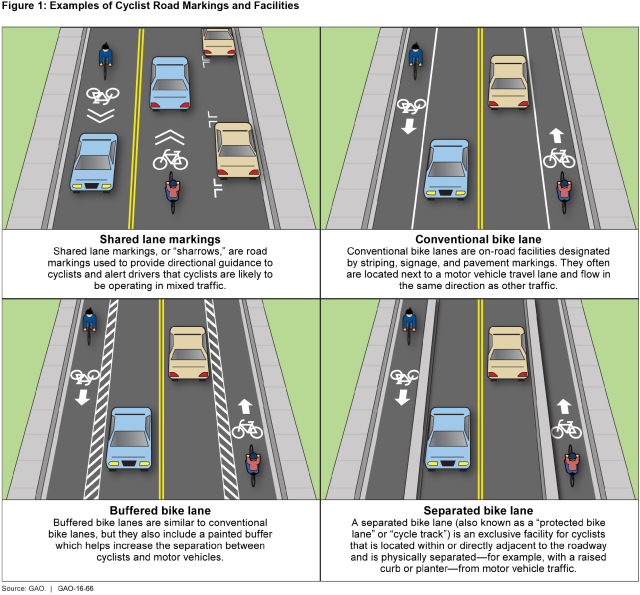Making Cycling and Walking Safer
If you biked or walked to work today, you’re not alone. Nearly a million more people reported walking or biking to work in 2013 than in 2005.
This week is Bike to Work Week, so the WatchBlog is taking a quick spin around issues in bike safety and city, state, and federal government efforts to reduce risk and raise awareness of safety for all road users.
Multiple Paths to Safer Roads
Late last year we reported that total traffic fatalities have declined in recent years—but we couldn’t say the same for pedestrian and cyclist fatalities. In 2013, both pedestrian and cyclist fatalities were up as a percent of all traffic deaths nationwide. Pedestrians accounted for nearly 15% of all traffic deaths and cyclists accounted for more than 2%.
Part of the reason for this is that there are more people walking and cycling. However we also found other factors may have contributed to the rise, such as alcohol use; distracted walking, cycling, and driving; and wide straight roads that can encourage motorist speeding.
Recognizing an increase in the number of pedestrians and cyclists, some cities and states are investing in ways to make roadways safer for all users. Examples of these efforts include constructing pedestrian crossing islands and adding conventional or separated bike lanes.
 (Excerpted from GAO-16-66)
(Excerpted from GAO-16-66)
We also found more comprehensive programs under way in New York City, San Francisco, and the District of Columbia. These cities have “Vision Zero” programs that aim to integrate data collection, engineering, education, and enforcement efforts with the goal of zero traffic fatalities.
In 2013 the U.S. Department of Transportation awarded more than $676 million for 2,424 projects related to pedestrian and cyclist safety. DOT is also leading the Mayors’ Challenge, which encourages local and state leaders to prioritize pedestrian and cyclist safety.
Bumps in the Road
Despite federal funding, construction and installation can still be expensive. A 2013 report by the University of North Carolina estimated that a mile of separated bikeways can cost from around half a million dollars to more than $4 million. For cities and states facing competing priorities for limited resources, these costs could be prohibitive.
Pedal (and Pedestrian) Power
Given that pedestrian and cyclist commuting trips have increased, continuing efforts to improve pedestrian and cyclist safety will be very important. Listen to Susan Fleming, a director in our Physical Infrastructure team, explain some of the safety projects—and the hurdles they face:
- Comments on GAO’s WatchBlog? Contact blog@gao.gov.
GAO Contacts
Related Products

GAO's mission is to provide Congress with fact-based, nonpartisan information that can help improve federal government performance and ensure accountability for the benefit of the American people. GAO launched its WatchBlog in January, 2014, as part of its continuing effort to reach its audiences—Congress and the American people—where they are currently looking for information.
The blog format allows GAO to provide a little more context about its work than it can offer on its other social media platforms. Posts will tie GAO work to current events and the news; show how GAO’s work is affecting agencies or legislation; highlight reports, testimonies, and issue areas where GAO does work; and provide information about GAO itself, among other things.
Please send any feedback on GAO's WatchBlog to blog@gao.gov.




